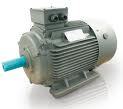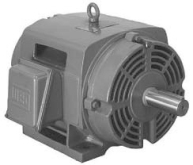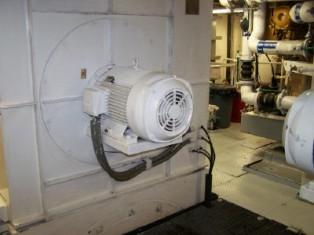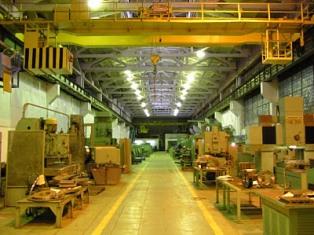Ventilation of electrical machines and electrical machine rooms
Ventilation of electrical machines
 Enclosed electrical machines can be blown or blown.
Enclosed electrical machines can be blown or blown.
In the blown version, the cooling of the electric motor is most often achieved by means of ventilation devices that are part of the electric machine itself.
Ventilation of ventilated electric machines is achieved both by their own ventilation devices and by forced supply of cooling air.

The temperature of the cooling air should not be lower than + 5 ° and not higher than + 35 ° C.
Electric motor catalogs usually specify the required amount of cooling air. In the absence of these data, the approximate air flow can be assumed equal to 180 m3 / h per 1 kW losses.
Head loss in engines is different for different machine types and should be clarified with machine manufacturers. With an accuracy sufficient for rough calculations for normal AC machines of medium power, these losses may be assumed to be about 15 — 20 mm of water. Art.
The ventilation of electrical machines can be carried out in an open cycle, with the supply of air from the outside and exhausting it to the outside, or in a closed cycle with the installation of air coolers. The choice of this or that system should be made for each specific case on the basis of consultation with the plants — manufacturers of electrical machines.
Ventilation of electrical machine rooms
When installing motors in special electrical rooms, the choice of the ventilation system is decisively influenced by the ratio between the cubic volume of the room and the total power of the installed machines; in this case, you can be guided by the following approximate data:
1. If there is at least 12 m3 of room per 1 kW of installed power, then there is no need for a ventilation device for either the machines or the room, and the machines can be selected in an open design; heat removal from the room is sufficient under these conditions due to natural air exchange.
2. When the volume of the room is 5 to 12 mg per 1 kW of installed power, the artificial ventilation device becomes mandatory, and the main machines must be covered with casings.The ventilation system in these cases may be common to the machinery and engine room; Such a system is commonly referred to as an engine room volume inclusion system.
3. If the volume of the room is less than 5 liters3 per 1 kW of the installed power, the ventilation systems of the machines and the machine room must be separate. The ventilation system of machines in such cases is called a system excluding the volume of the machine room.
As a rule, ventilation is designed by specialized organizations assigned appropriate tasks.
In the room ventilation task, power losses, maximum and minimum air temperatures and the degree of dustiness of the environment must be specified.
Power losses for electrical machines are determined by the formula:
Pn = Pnom x ((1 — γ1nom) / γ1nom)
Power losses in resistance boxes can be taken as an average of 1 kW per installed box, and in magnetic stations (losses in coils electromagnetic contactors, starters and relays) — 0.2 kW per panel.


